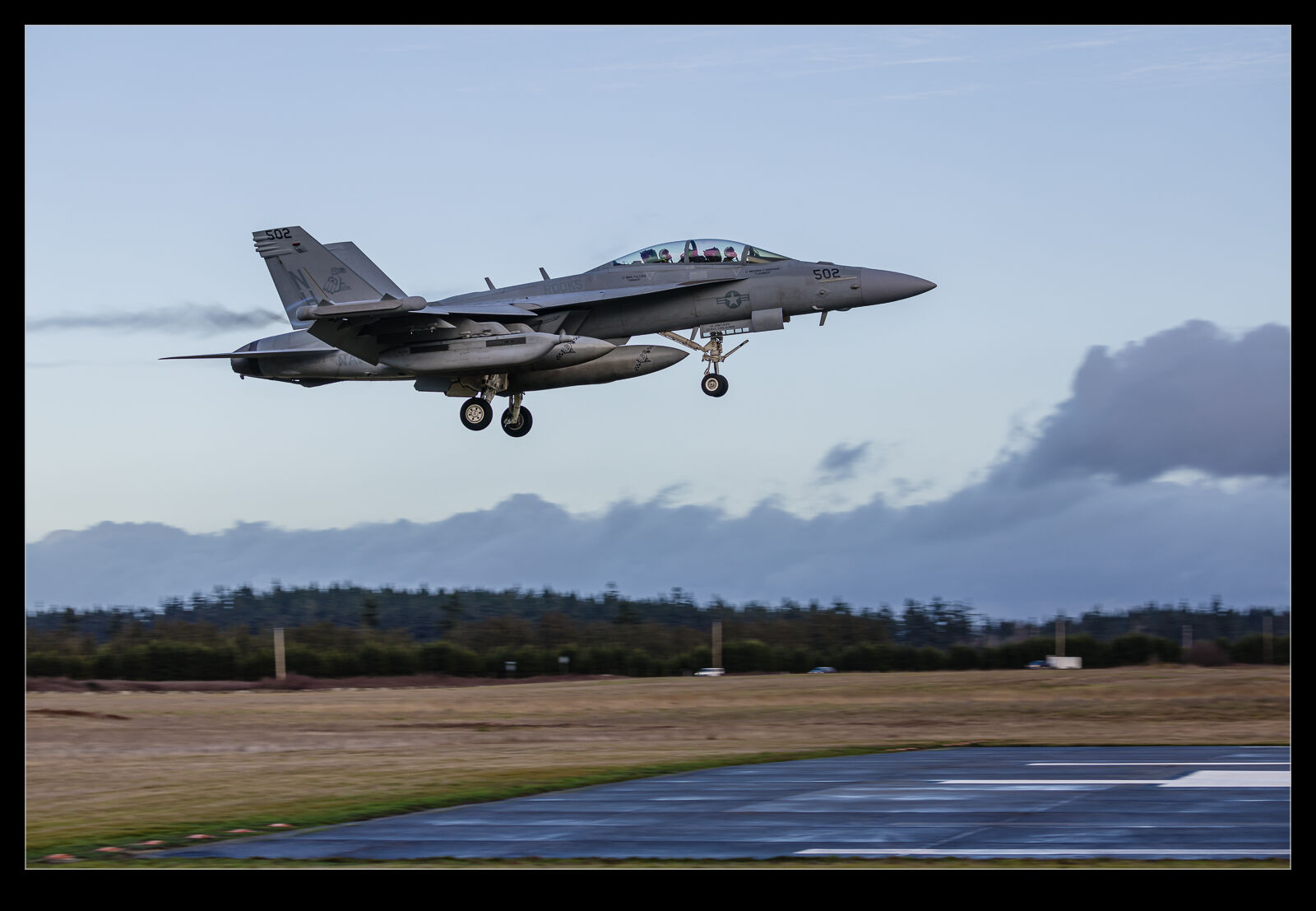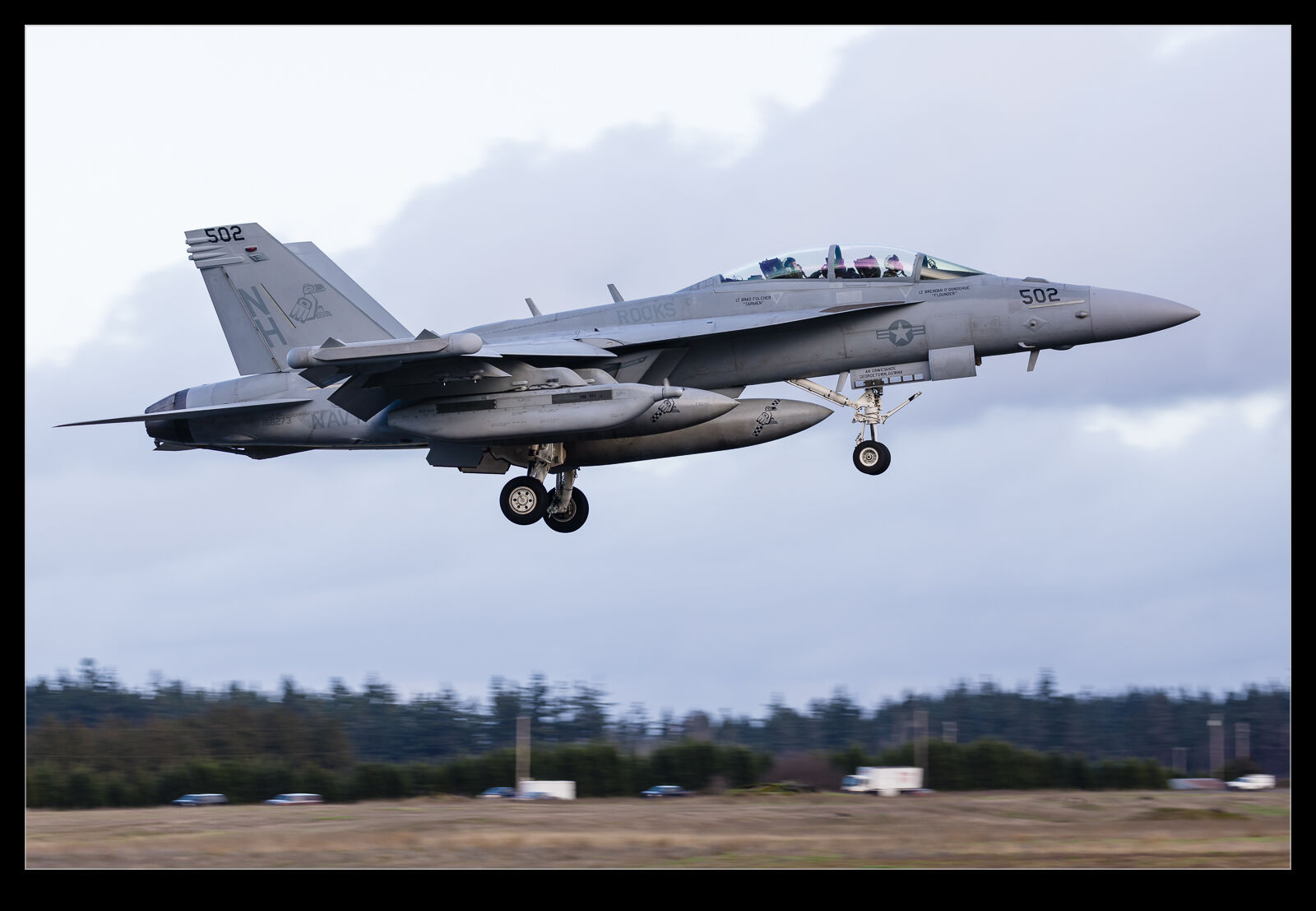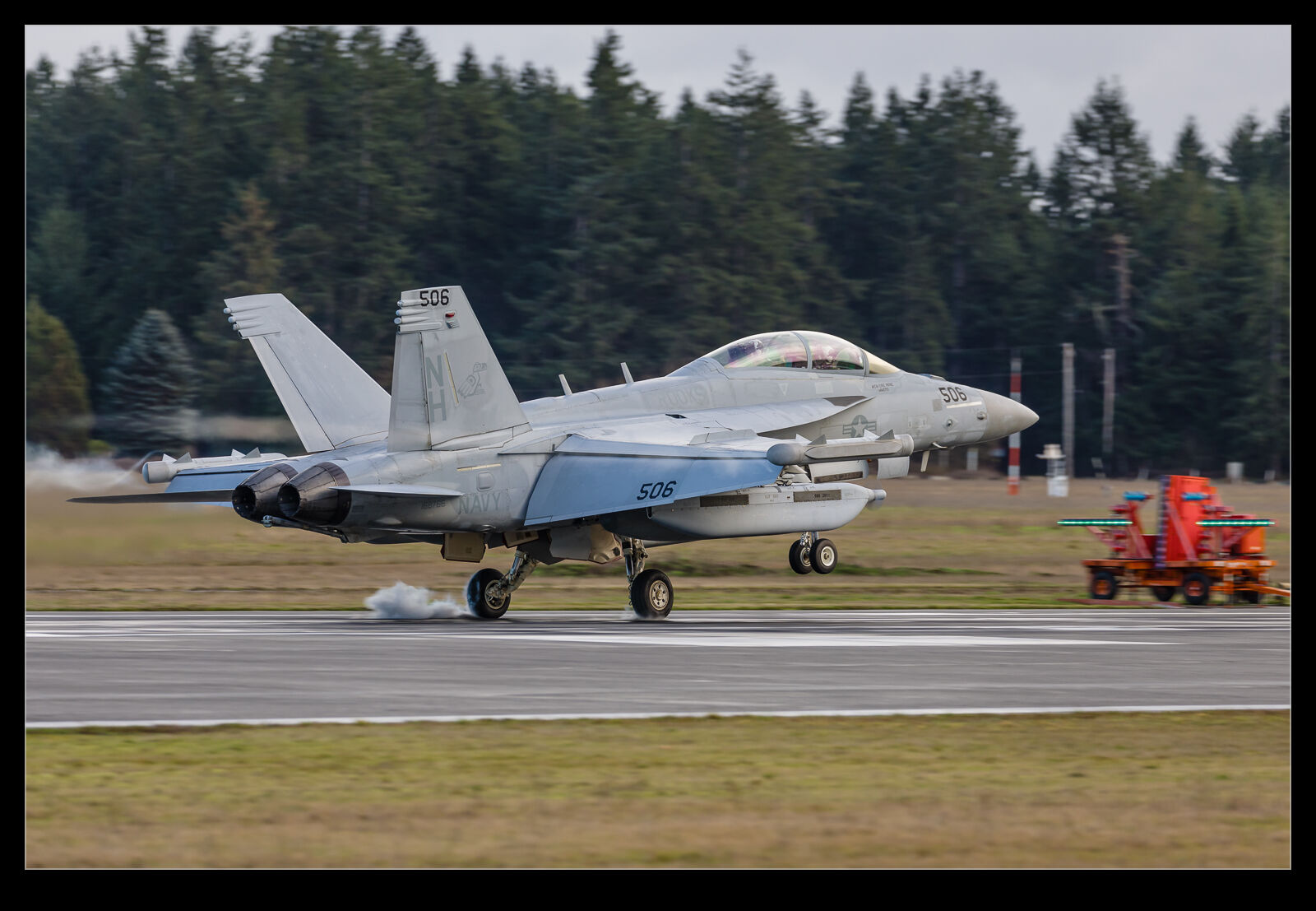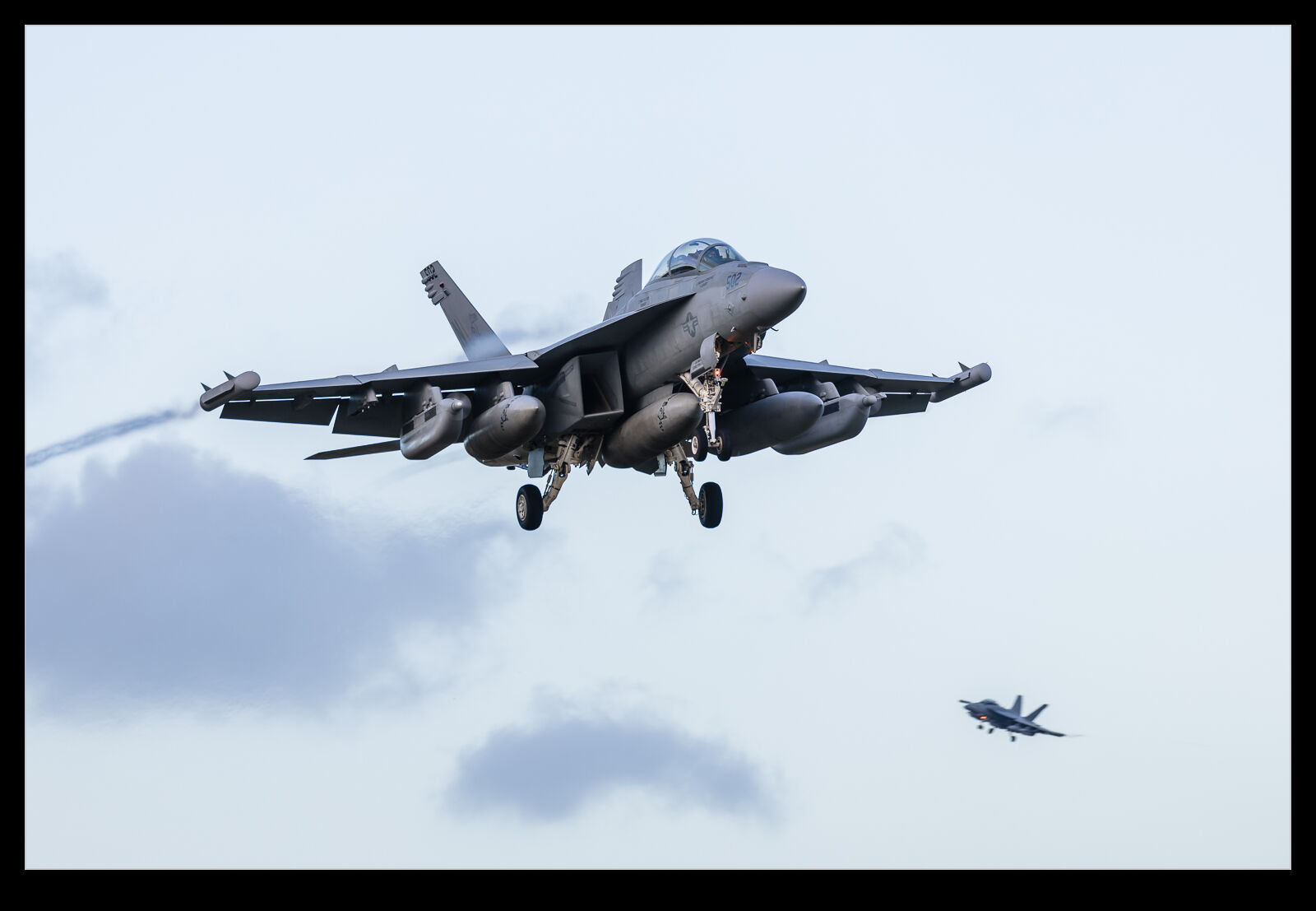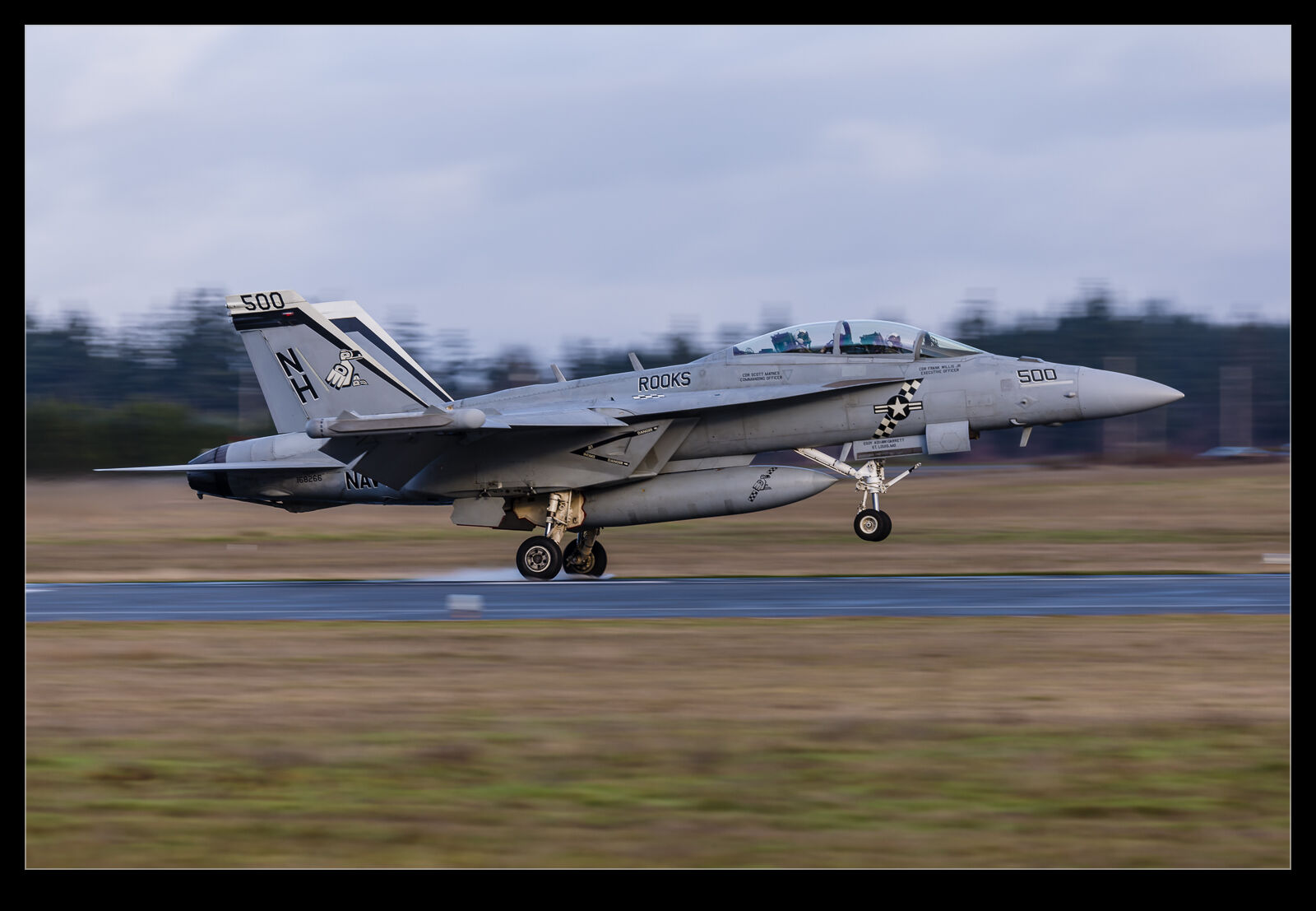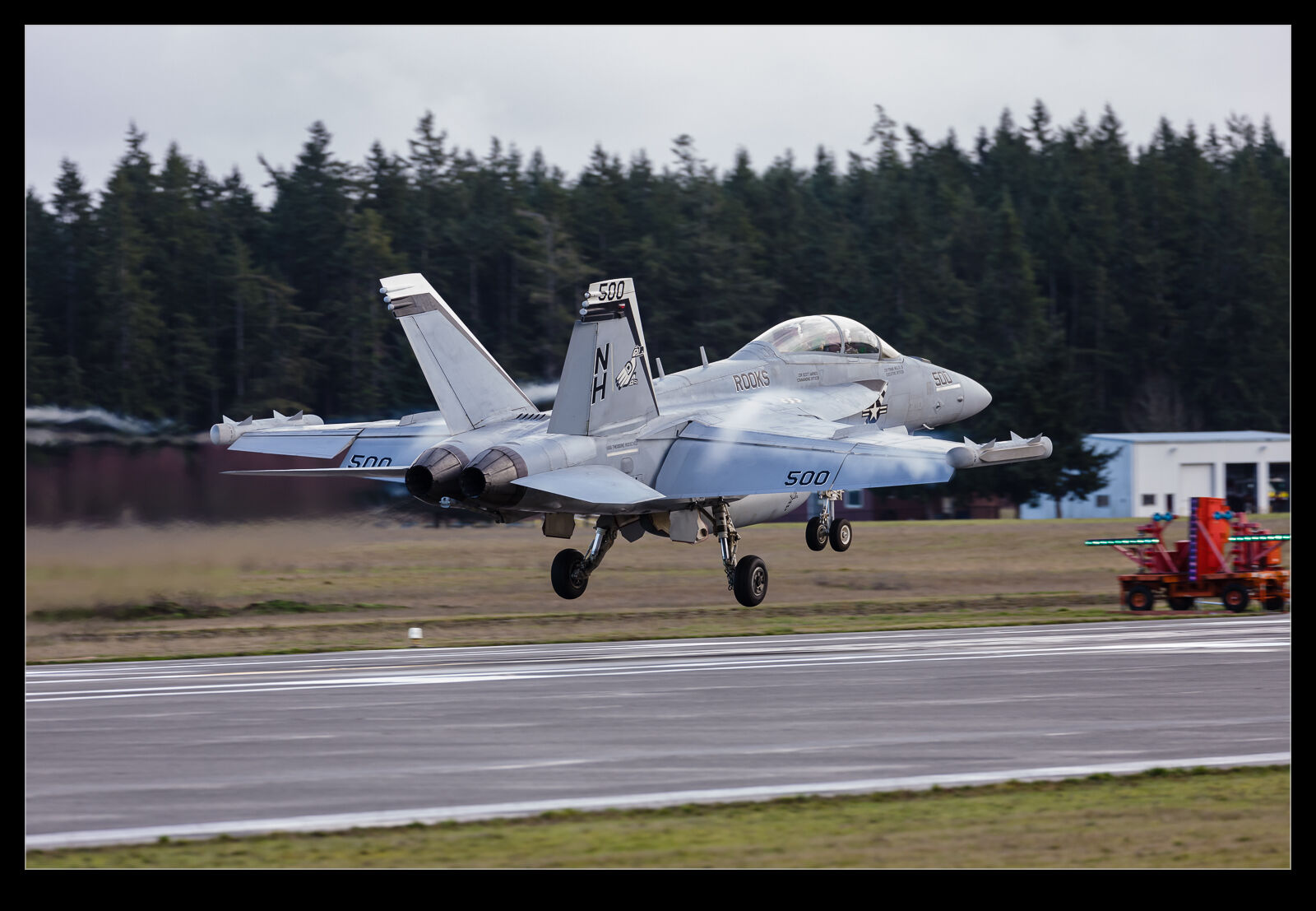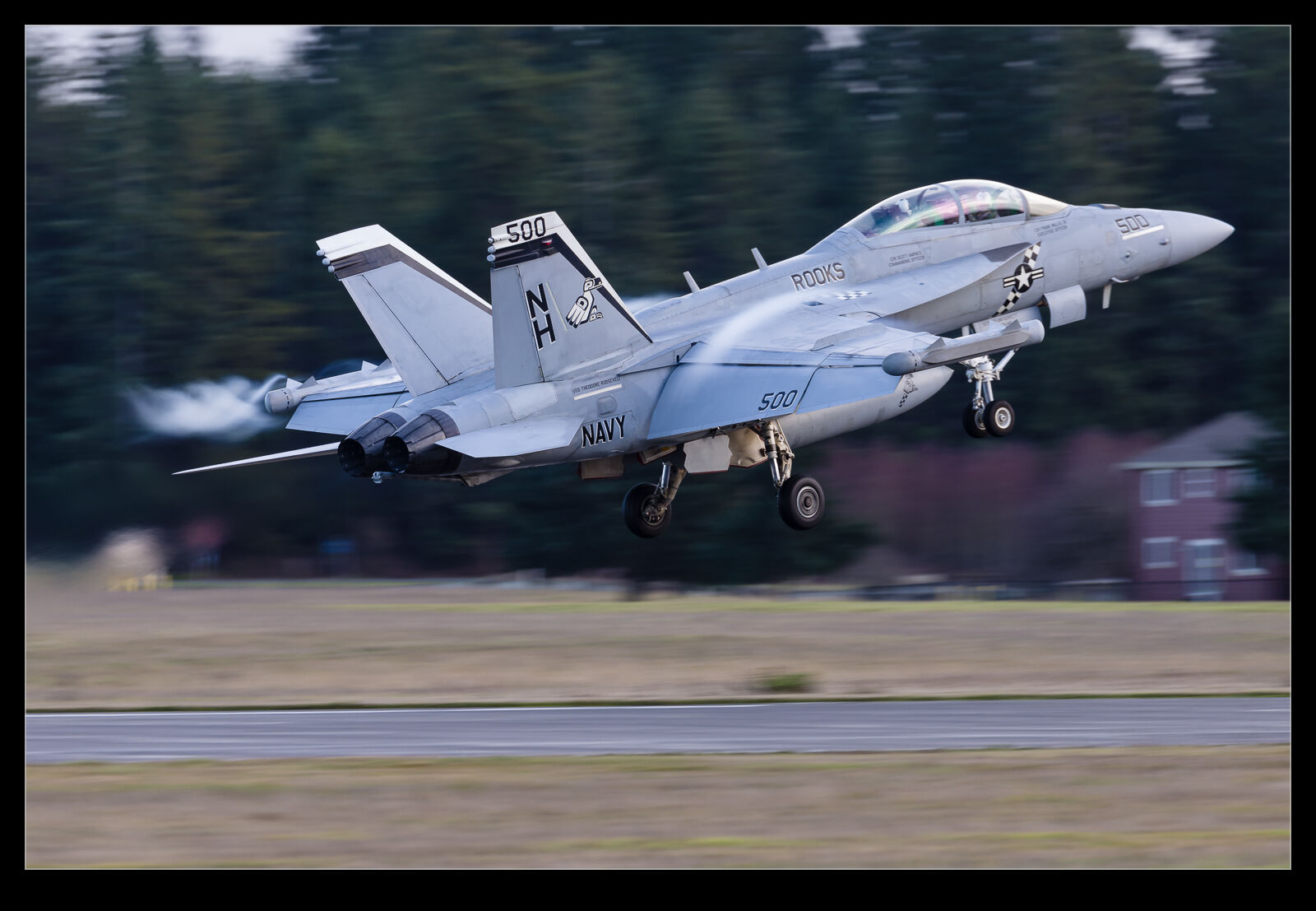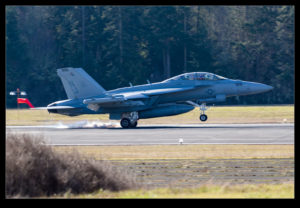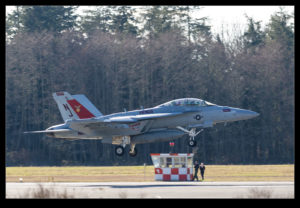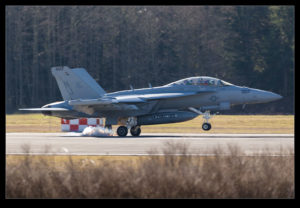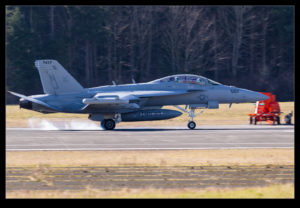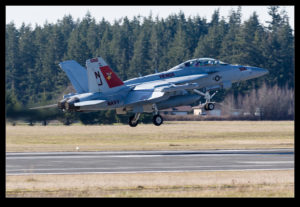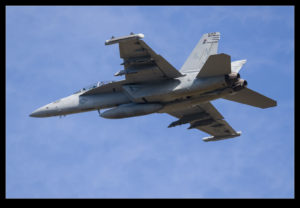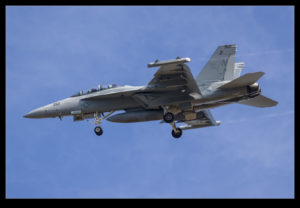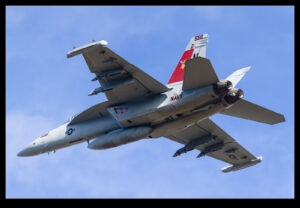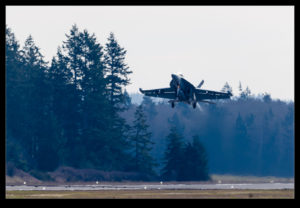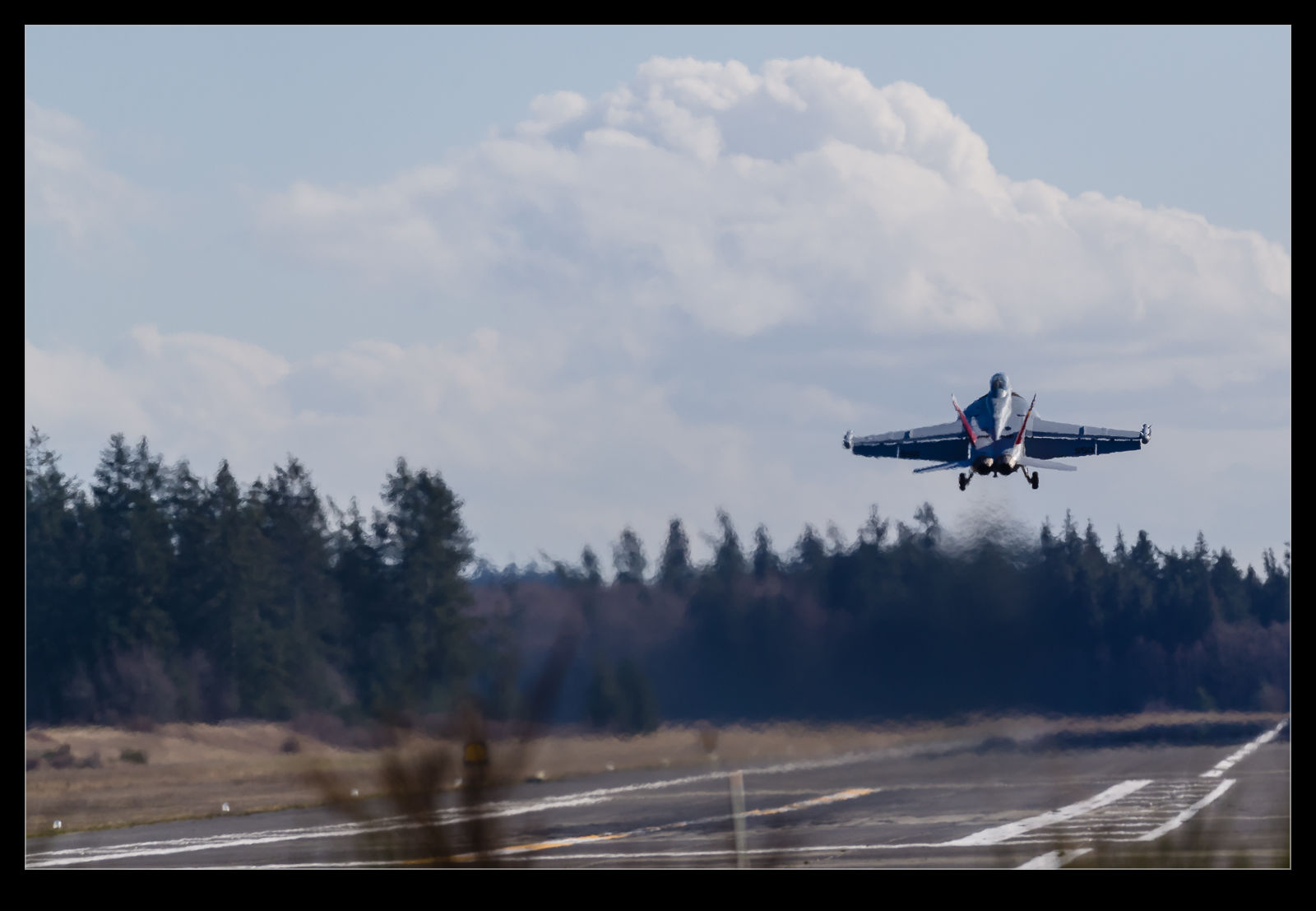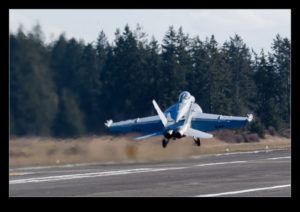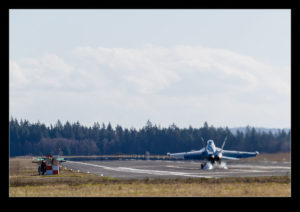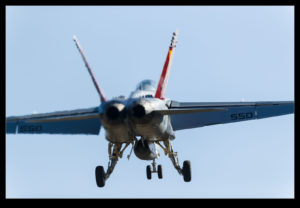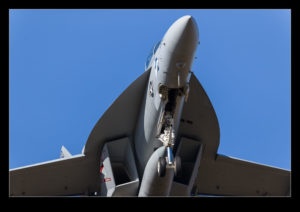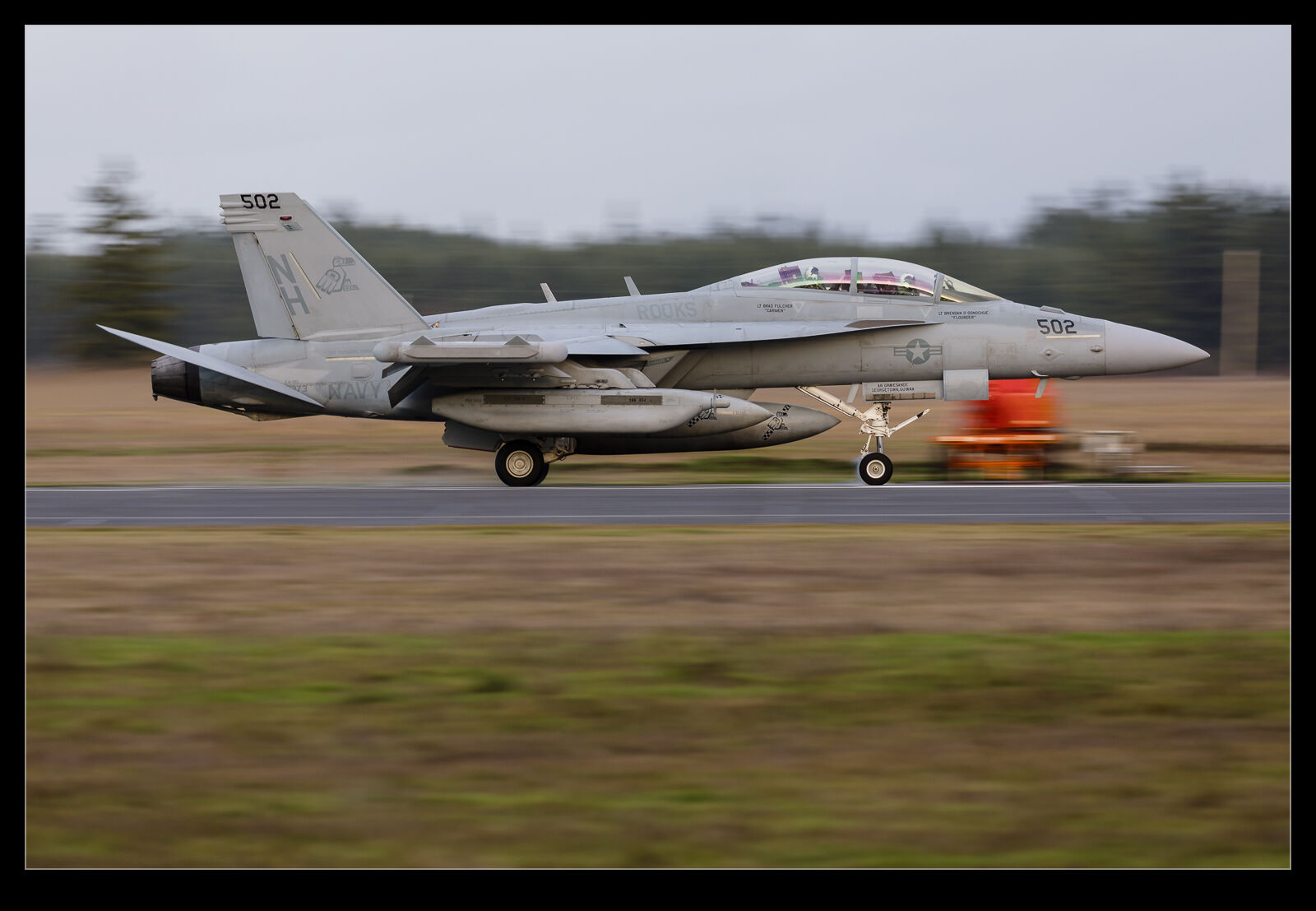 I have seen some pictures recently of Growlers bouncing at Coupeville with the latest jamming pods on the underwing pylons. I was hoping that the jets I saw from the Rooks might be carrying the new pods. Instead, they were using the older pods. At first, I was disappointed by this but then I realized that this was the wrong way to look at things. The new pods will be around for a long time and the chances are I will see them a lot in the future. Making sure I have some shots of the older pods on jets as the bounce is something to make the most of before they are gone. We only miss stuff when it is going away so time to think ahead.
I have seen some pictures recently of Growlers bouncing at Coupeville with the latest jamming pods on the underwing pylons. I was hoping that the jets I saw from the Rooks might be carrying the new pods. Instead, they were using the older pods. At first, I was disappointed by this but then I realized that this was the wrong way to look at things. The new pods will be around for a long time and the chances are I will see them a lot in the future. Making sure I have some shots of the older pods on jets as the bounce is something to make the most of before they are gone. We only miss stuff when it is going away so time to think ahead.
Tag Archives: fclp
CAG Growler is Clean
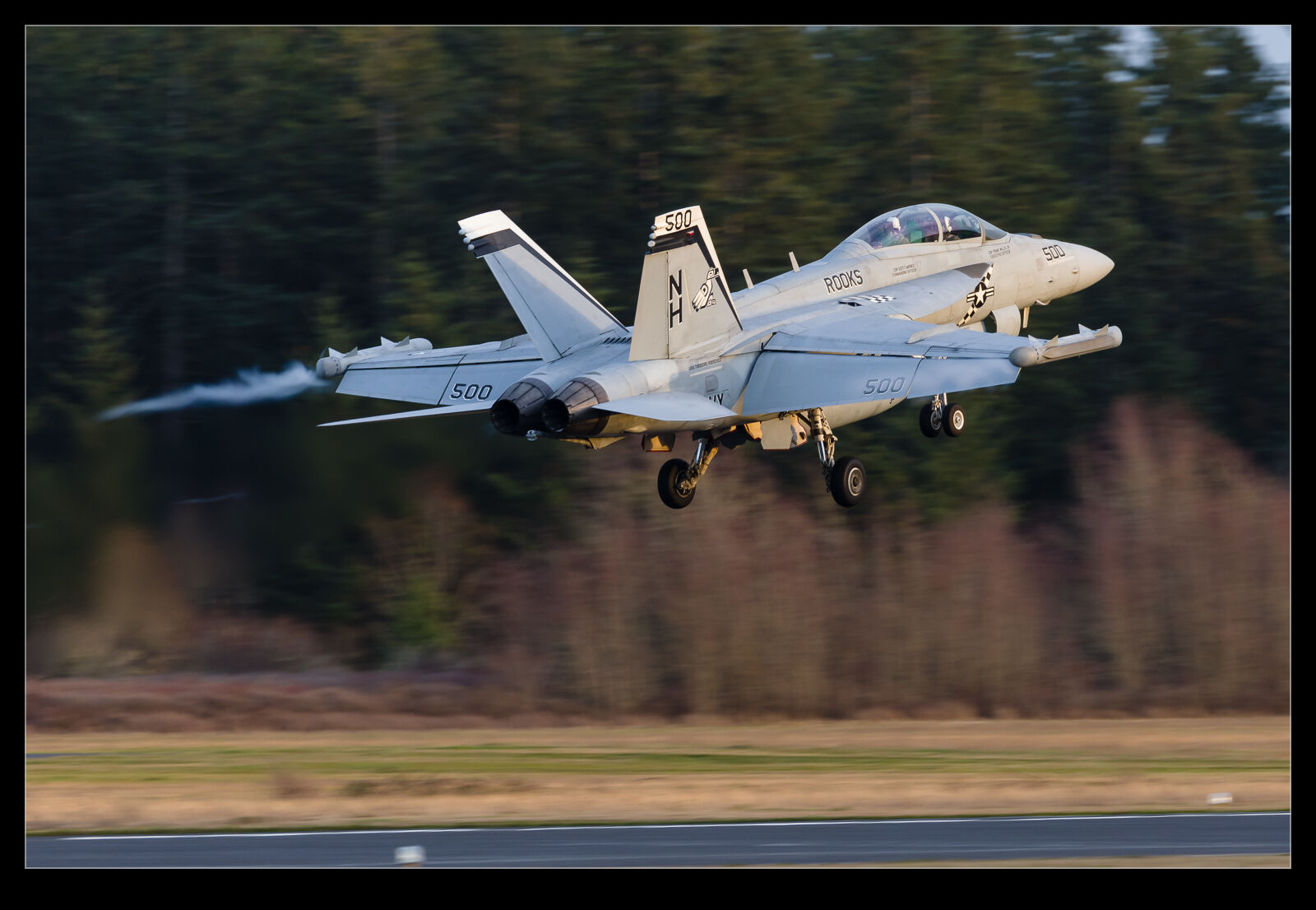 A trip to Coupeville is always going to be a bit hit or miss. Will the weather play ball, will the jets show up, how much will they bounce, how many of them will there be, will they be RAG jets or operational squadrons? All sorts of options. I was really happy that the weather suited a pattern direction that was better for photography, but it was mainly cloudy so not quite as good-looking light. It was the Rooks of VAQ137 that were bouncing so that was cool, and they brought their CAG jet. Getting this in its nice colors was cool. The jet was operating clean which was slightly disappointing but, fortunately, the other jets that came in were carrying pods.
A trip to Coupeville is always going to be a bit hit or miss. Will the weather play ball, will the jets show up, how much will they bounce, how many of them will there be, will they be RAG jets or operational squadrons? All sorts of options. I was really happy that the weather suited a pattern direction that was better for photography, but it was mainly cloudy so not quite as good-looking light. It was the Rooks of VAQ137 that were bouncing so that was cool, and they brought their CAG jet. Getting this in its nice colors was cool. The jet was operating clean which was slightly disappointing but, fortunately, the other jets that came in were carrying pods.
Bouncing Growlers
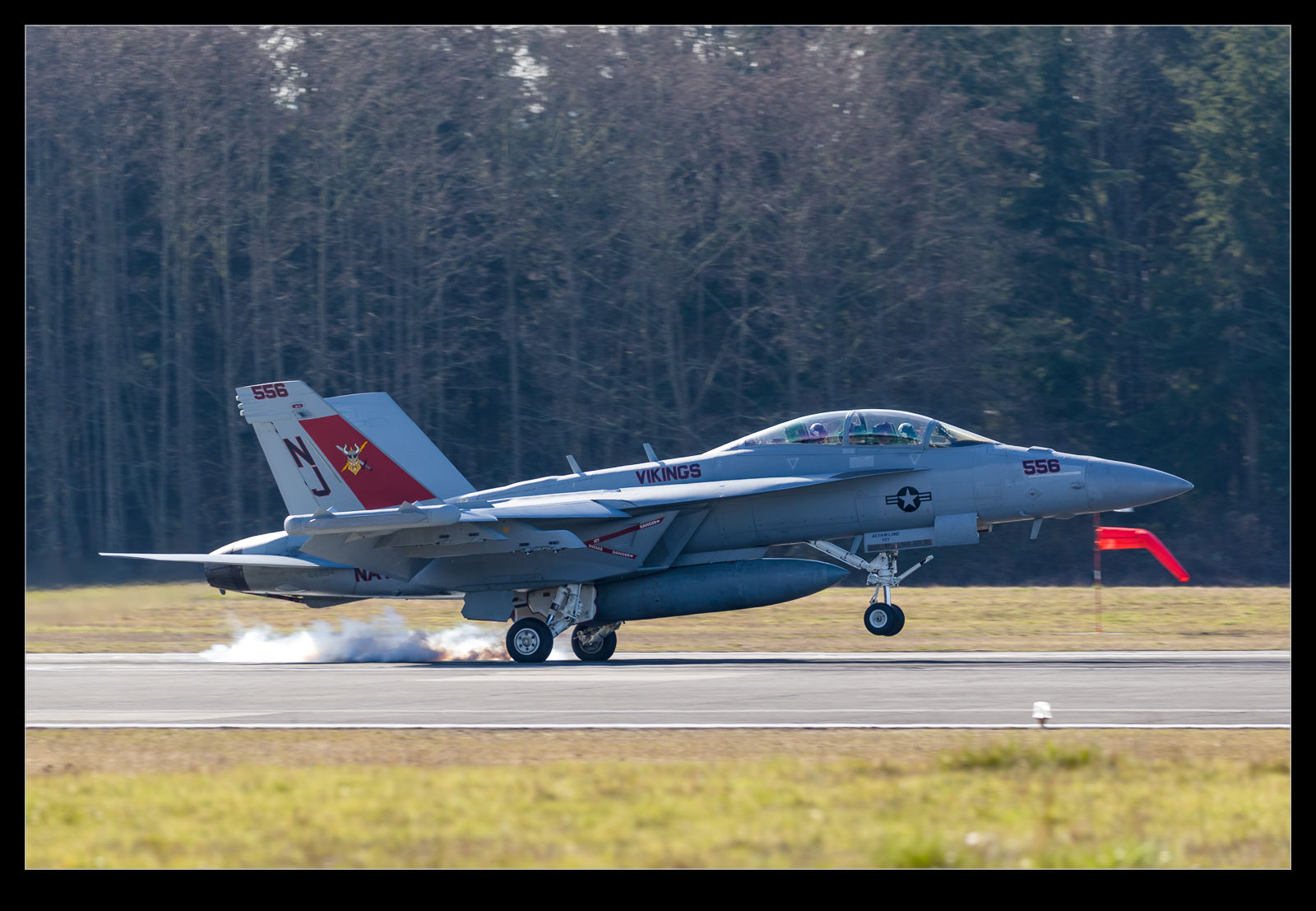 The sun was forecast, I had some time to spare and there was even suggestion of southerly winds so I took a day off and headed to Whidbey Island. Coupeville was planned for some FCLP training for the Growlers from Ault Field so I went up to see what I could see. With winter light, the sun is way to the south. It cross the centerline of the runway by late morning and, unfortunately, the first flight to arrive came after this time. They only had one meatball on the field and it was set up at the south end. The wind was southerly but not strong so they clearly decided a small tailwind was easier than dragging the lights to the other end and aligning them. Crap!
The sun was forecast, I had some time to spare and there was even suggestion of southerly winds so I took a day off and headed to Whidbey Island. Coupeville was planned for some FCLP training for the Growlers from Ault Field so I went up to see what I could see. With winter light, the sun is way to the south. It cross the centerline of the runway by late morning and, unfortunately, the first flight to arrive came after this time. They only had one meatball on the field and it was set up at the south end. The wind was southerly but not strong so they clearly decided a small tailwind was easier than dragging the lights to the other end and aligning them. Crap!
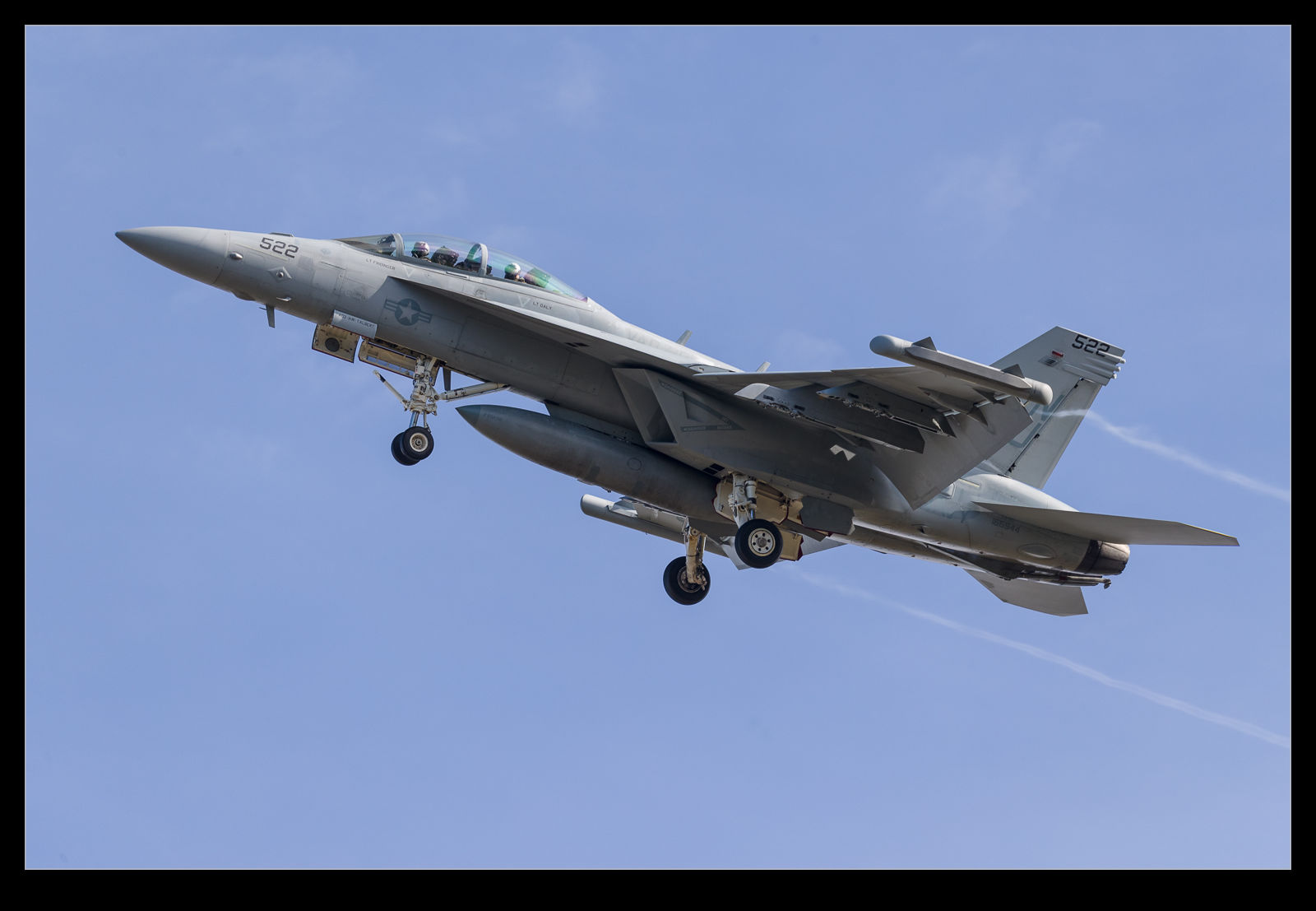 I spent some time on the sunny side which is far from the touchdown zone. I shot some stills and some video. The jets only get close when they are well airborne but it was possible to get a few shots that were okay. When they had finished the practice you knew it was the case because the jets cleaned up and powered away. I headed down to the water to have some lunch.
I spent some time on the sunny side which is far from the touchdown zone. I shot some stills and some video. The jets only get close when they are well airborne but it was possible to get a few shots that were okay. When they had finished the practice you knew it was the case because the jets cleaned up and powered away. I headed down to the water to have some lunch.
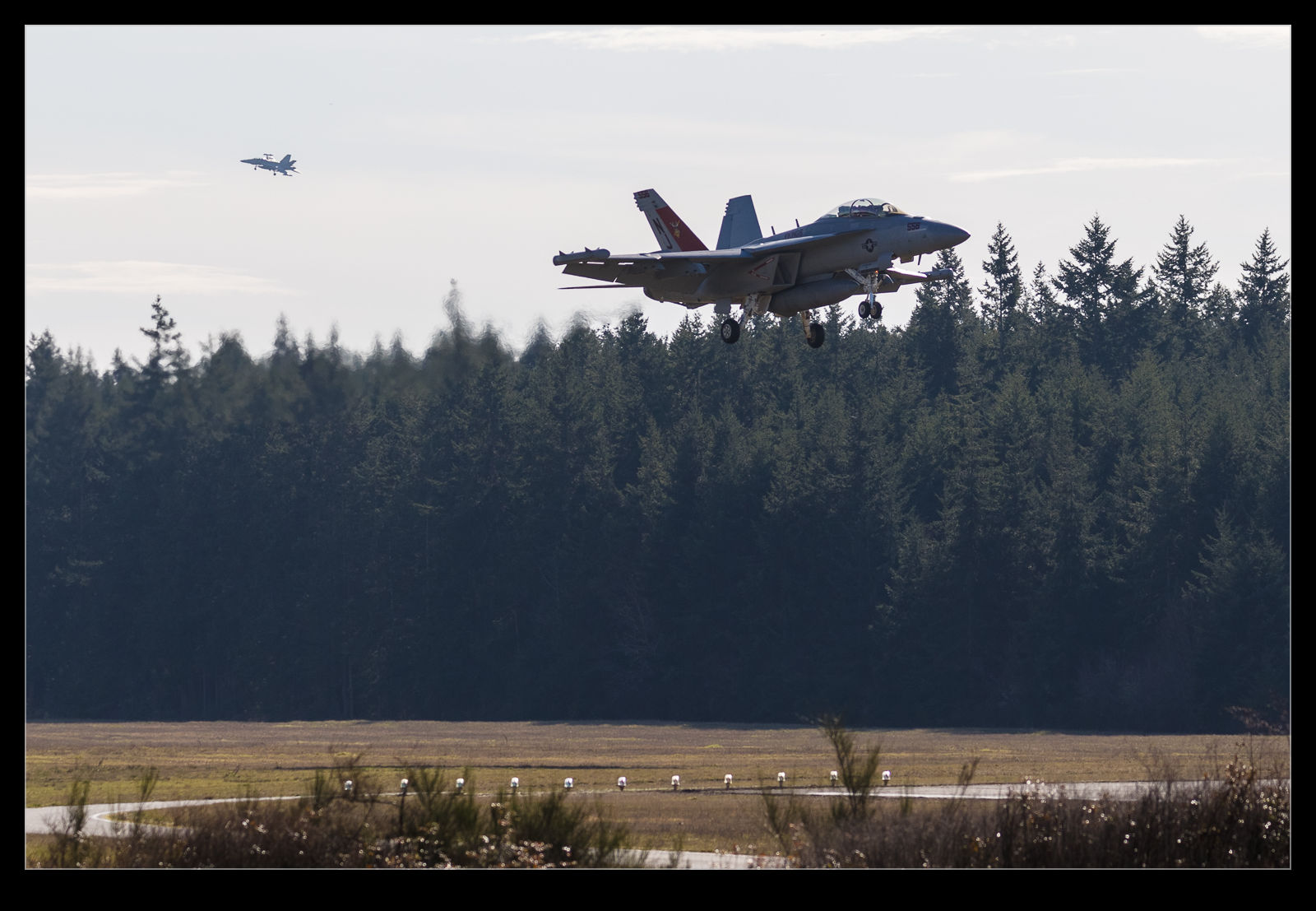 It wasn’t long before I heard the sound of jets again. I saw a couple of them turning over the bay and descending to the field so headed back up. While the light was on the wrong side, I figured I would just try something new since the alternative was just more of what I already had shot. It even was the same jets as the earlier session. I shot some backlit landings near the touchdown zone (and I was not alone – plenty of people stopped their cars to watch). With a bunch of shots and video done, I figured it was time to head home.
It wasn’t long before I heard the sound of jets again. I saw a couple of them turning over the bay and descending to the field so headed back up. While the light was on the wrong side, I figured I would just try something new since the alternative was just more of what I already had shot. It even was the same jets as the earlier session. I shot some backlit landings near the touchdown zone (and I was not alone – plenty of people stopped their cars to watch). With a bunch of shots and video done, I figured it was time to head home.
- A US Navy Boeing EA-18G Growler departs NOLF Coupeville on Whidbey Island WA.
- A US Navy Boeing EA-18G Growler departs NOLF Coupeville on Whidbey Island WA.
Bounce It Down and Do It Again
 Since the Growler crews were training as if they were on the deck at sea, they don’t flare their landings at all. They hit the runway hard and the tire smoke that results is substantial. Normal landing procedure on a carrier is to go to full throttle as soon as they hit the deck. There isn’t time to react if you miss the wire so hit the gas and, if the wire doesn’t stop you, you fly right off the other end of the deck and climb away. Since there is no wire at Coupeville, that means every touchdown is followed by a rapid rotation and climb away. The climb is pretty steep initially which keeps the speed under control until the power is backed off.
Since the Growler crews were training as if they were on the deck at sea, they don’t flare their landings at all. They hit the runway hard and the tire smoke that results is substantial. Normal landing procedure on a carrier is to go to full throttle as soon as they hit the deck. There isn’t time to react if you miss the wire so hit the gas and, if the wire doesn’t stop you, you fly right off the other end of the deck and climb away. Since there is no wire at Coupeville, that means every touchdown is followed by a rapid rotation and climb away. The climb is pretty steep initially which keeps the speed under control until the power is backed off.
Growler Overhead
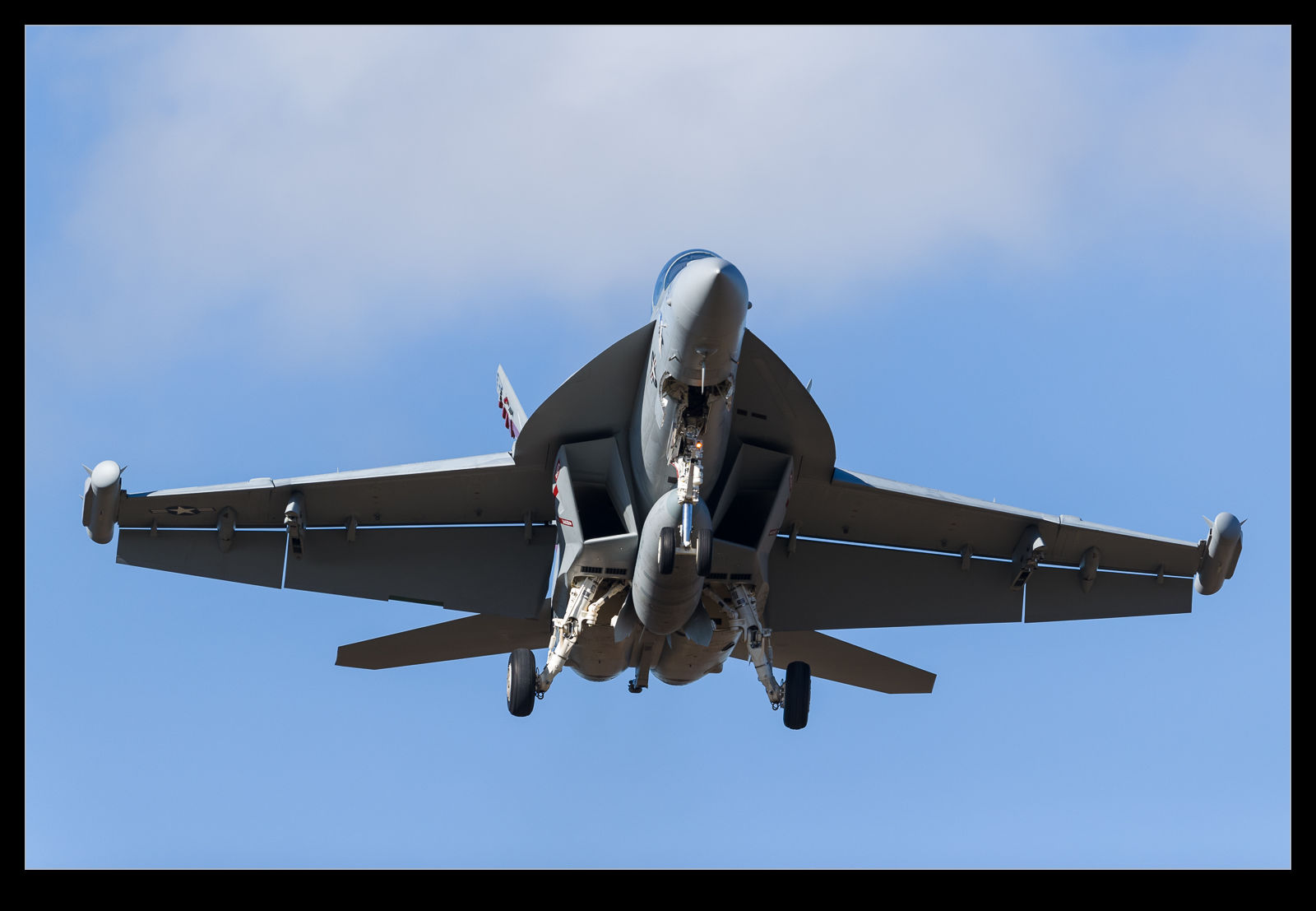 The approach to the runway at Coupeville brings the jets right over one of the local roads. This meant I had the opportunity to go for some head on type shots of the jets. As they came right over the top of me, I got a nice view of the underside of the jets. I also experienced the noise level of a Growler. I hadn’t thought to bring hearing protection and, if I go back, which I am pretty sure I shall do at some point, I will remember to take some. You are really quite close and the sound levels are high!
The approach to the runway at Coupeville brings the jets right over one of the local roads. This meant I had the opportunity to go for some head on type shots of the jets. As they came right over the top of me, I got a nice view of the underside of the jets. I also experienced the noise level of a Growler. I hadn’t thought to bring hearing protection and, if I go back, which I am pretty sure I shall do at some point, I will remember to take some. You are really quite close and the sound levels are high!
FCLP Training for the Growlers
 Naval aviators have to practice the art of landing on a carrier a lot. Before they ever go to the boat, they undertake a lot of field carrier landing practice. This involves flying the carrier pattern to a runway as if it was the boat. The outline of the deck landing area is painted on the runway, the lighting is replicated and the guidance calls are provided by crews alongside the runway just as if they were at sea. The crews fly around the pattern and thump onto the runway just like it was the deck and then apply power just like they would if they were aiming for a wire.
Naval aviators have to practice the art of landing on a carrier a lot. Before they ever go to the boat, they undertake a lot of field carrier landing practice. This involves flying the carrier pattern to a runway as if it was the boat. The outline of the deck landing area is painted on the runway, the lighting is replicated and the guidance calls are provided by crews alongside the runway just as if they were at sea. The crews fly around the pattern and thump onto the runway just like it was the deck and then apply power just like they would if they were aiming for a wire.
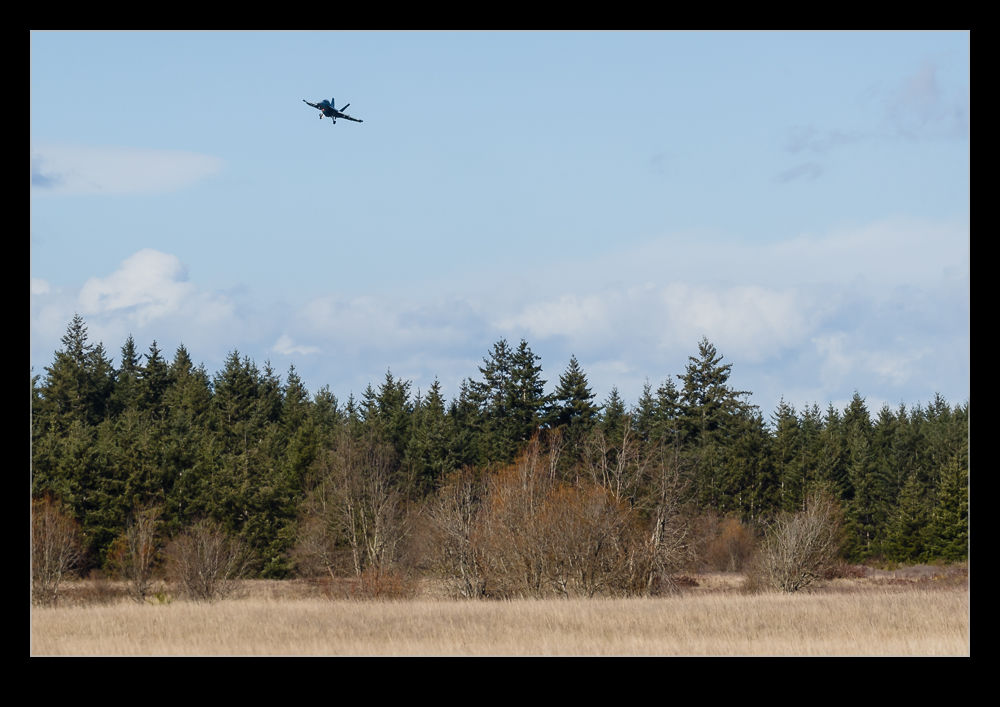 Of course, there is no wire so they power up and fly away to repeat again. The goal is to be as practiced with the whole procedure as possible before they ever go to sea. Naturally, there is still a difference dealing with a static runway in a field as opposed to a moving ship in open sea. Still, it is the way to prepare. Naval air stations tend to have separate fields away from the main base at which this training can take place. They are away from the normal base flying and allow this training to take place uninterrupted.
Of course, there is no wire so they power up and fly away to repeat again. The goal is to be as practiced with the whole procedure as possible before they ever go to sea. Naturally, there is still a difference dealing with a static runway in a field as opposed to a moving ship in open sea. Still, it is the way to prepare. Naval air stations tend to have separate fields away from the main base at which this training can take place. They are away from the normal base flying and allow this training to take place uninterrupted.
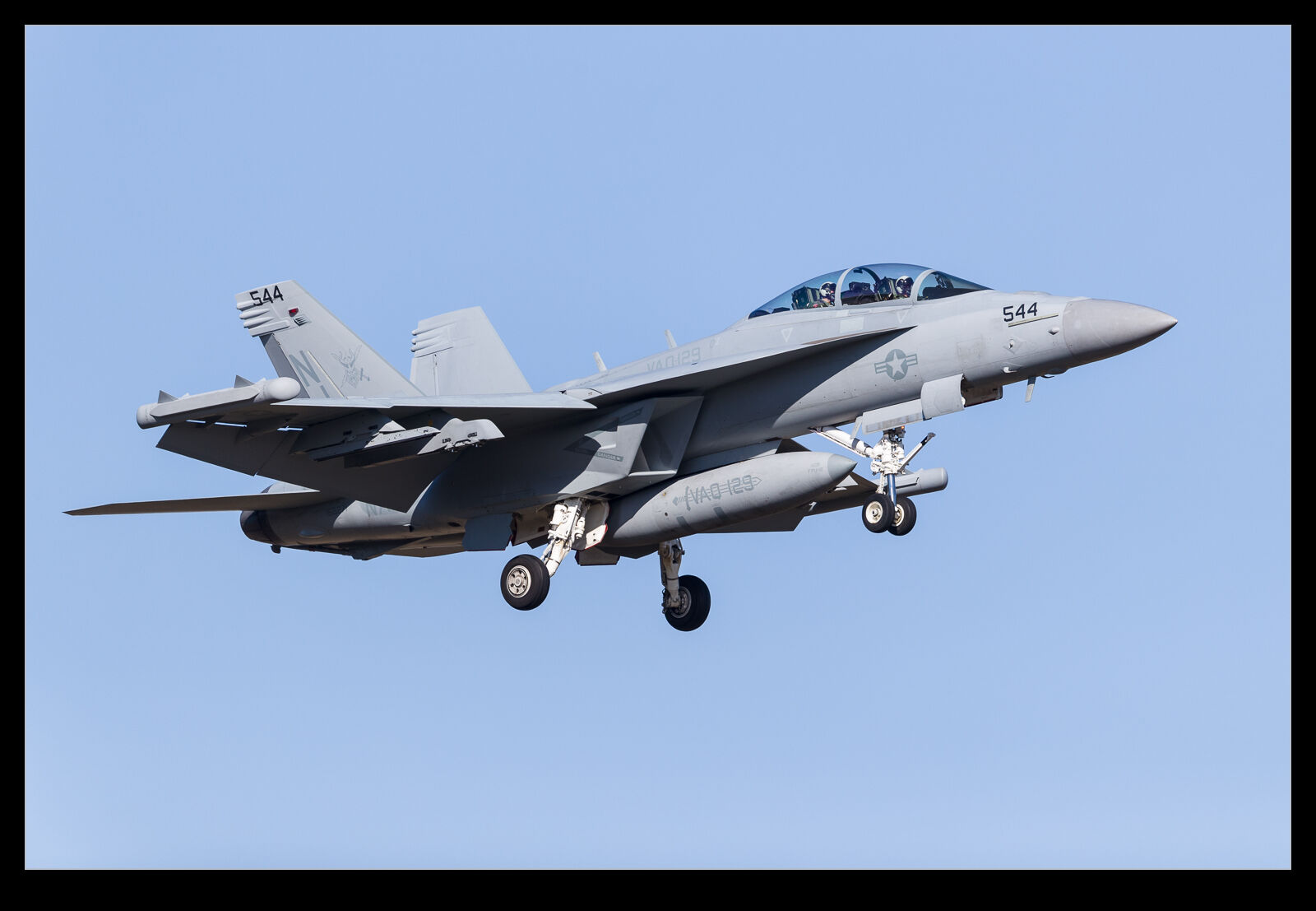 NAS Whidbey Island has its outlying field at Coupeville. They announce when flying training will take place there in order to keep the local community aware of the potential noise. Usually there is little chance for me to go because of work but it turned out that one of the flying days was scheduled to have good weather and I should be able to take time off. Not only was the weather due to be good but the wind was in a direction that meant they would be flying to the end of the runway that is more accessible. I planned to be there.
NAS Whidbey Island has its outlying field at Coupeville. They announce when flying training will take place there in order to keep the local community aware of the potential noise. Usually there is little chance for me to go because of work but it turned out that one of the flying days was scheduled to have good weather and I should be able to take time off. Not only was the weather due to be good but the wind was in a direction that meant they would be flying to the end of the runway that is more accessible. I planned to be there.
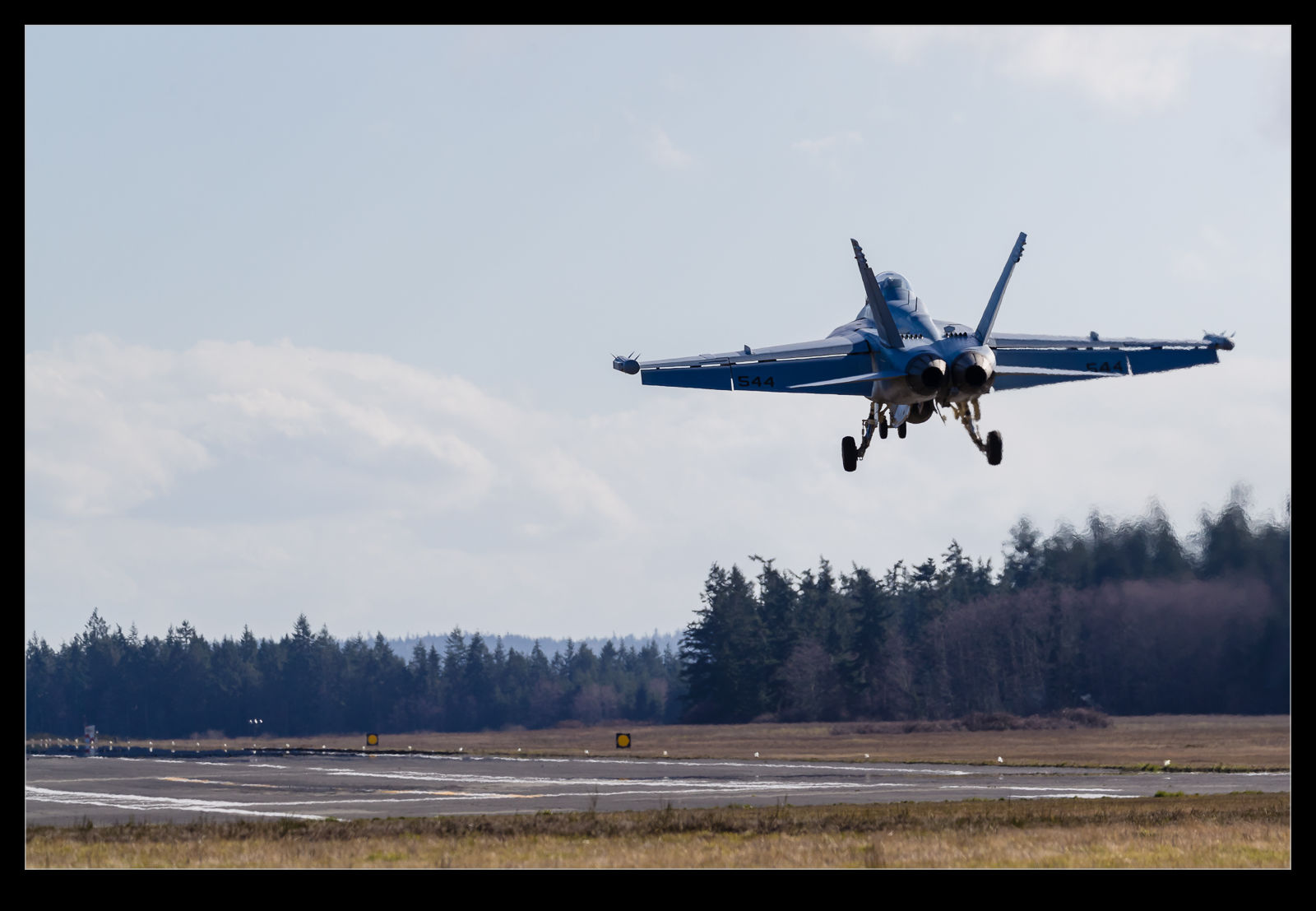 As it happened, something came up at work and I had to go to Seattle before I could leave. Consequently, I was behind schedule. I eventually managed to get on my way and I got to Mukilteo just in time to catch a ferry. Once on the island, I headed up to Coupeville and, sure enough, as I got closer, I could see Growlers flying patterns. I got to the field and parked up away from the road. I walked back, all the time hearing jets flying around. Then I was in position to get some shots.
As it happened, something came up at work and I had to go to Seattle before I could leave. Consequently, I was behind schedule. I eventually managed to get on my way and I got to Mukilteo just in time to catch a ferry. Once on the island, I headed up to Coupeville and, sure enough, as I got closer, I could see Growlers flying patterns. I got to the field and parked up away from the road. I walked back, all the time hearing jets flying around. Then I was in position to get some shots.
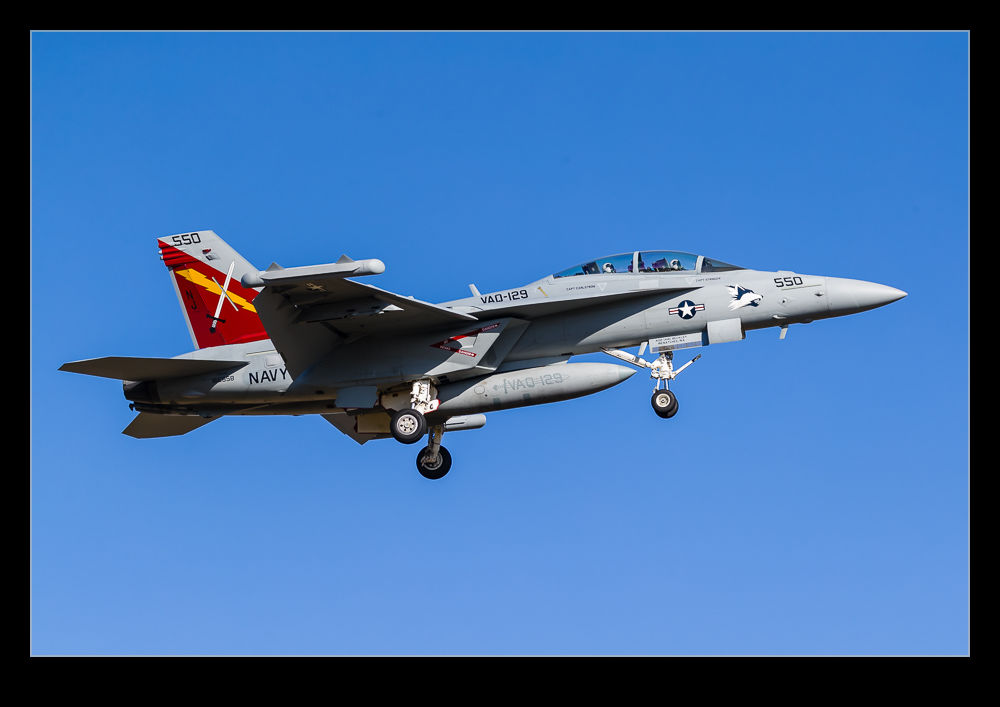 I kept moving so I could get closer to the touchdown point but the flying stopped as I got closer. Then they packed up operations. They were done, at least until the evening. If I had missed the boat, I would have missed the whole thing!
I kept moving so I could get closer to the touchdown point but the flying stopped as I got closer. Then they packed up operations. They were done, at least until the evening. If I had missed the boat, I would have missed the whole thing!
